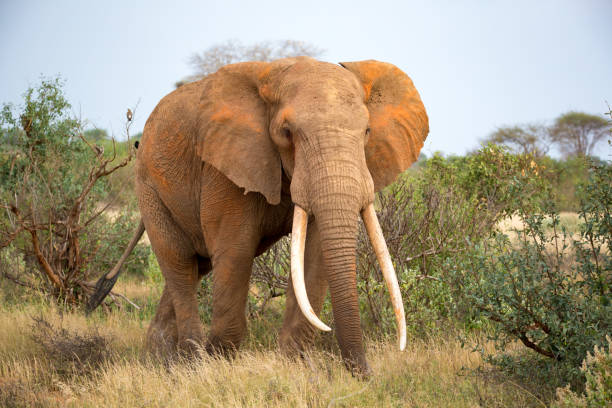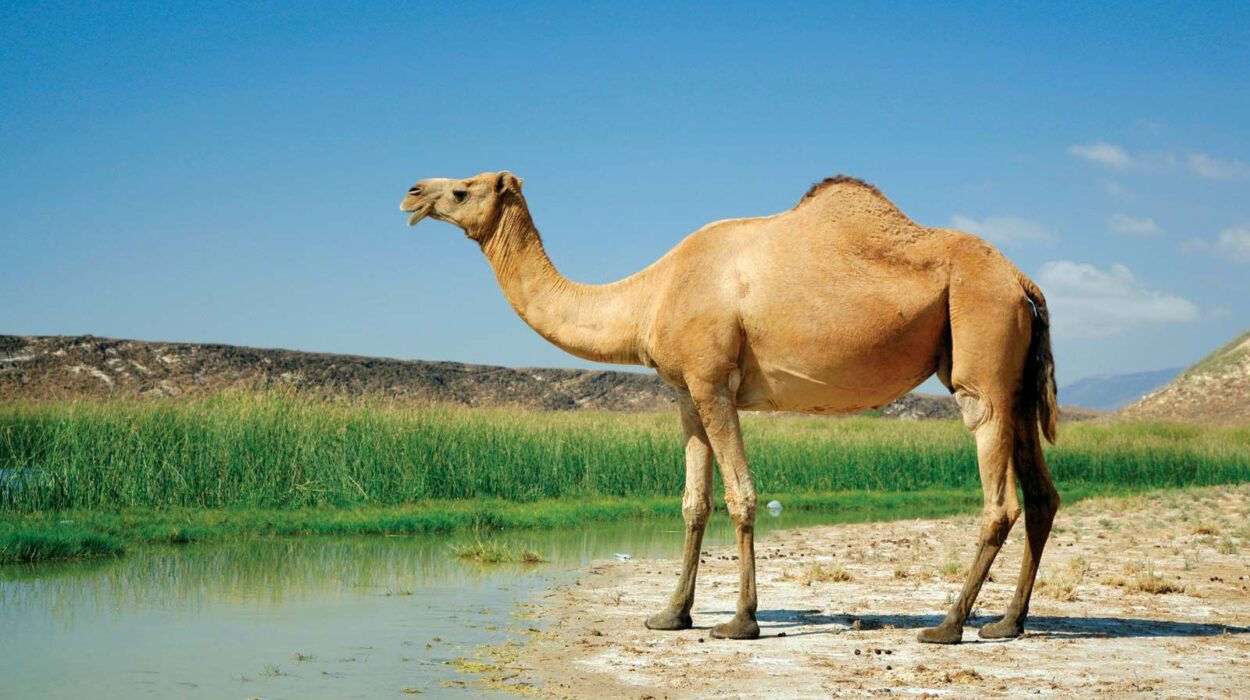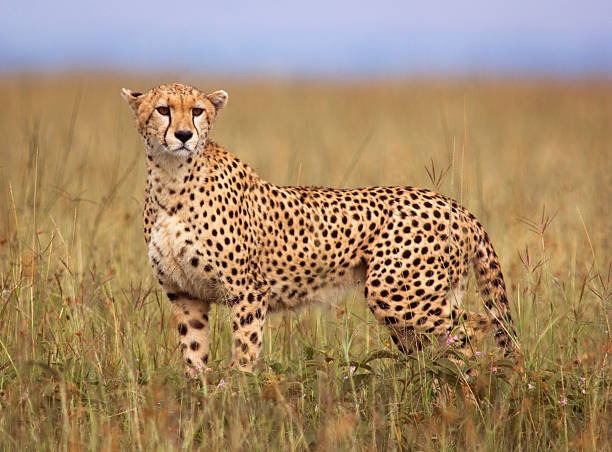Among all the creatures that roam the Earth, few capture the imagination and the heart like the elephant. With its massive frame, wise eyes, and almost human-like sensitivity, the elephant stands as a symbol of strength, memory, family, and grace. It is a creature of paradoxes—mighty yet gentle, ancient yet vulnerable, social yet independent.
The elephant has walked this planet for millions of years, shaping landscapes, nurturing ecosystems, and coexisting with humankind long before recorded history. Its image adorns cave paintings, temples, folklore, and flags. It is revered as a god in some cultures, a totem of wisdom in others, and a keystone species in the natural world.
But beyond myth and symbolism, the elephant is a living miracle of evolution—a creature whose biology, intelligence, and emotions rival our own. It is an animal that remembers, grieves, communicates, and even seems to dream. To know the elephant is to know a piece of the Earth’s soul itself.
The Lineage of Giants
The story of the elephant begins deep in prehistoric time, long before humans ever appeared. The ancestors of modern elephants—known as proboscideans—first emerged around 60 million years ago. They evolved from small, pig-like mammals that lived in swampy regions after the extinction of the dinosaurs.
Over millions of years, evolution sculpted these creatures into the magnificent giants we know today. There were once over 160 species of proboscideans spread across the globe, including the famous mammoths and mastodons. Some, like the woolly mammoth, roamed the frozen tundra; others thrived in warm forests and plains.
Today, only three species remain: the African bush elephant (Loxodonta africana), the African forest elephant (Loxodonta cyclotis), and the Asian elephant (Elephas maximus). These are the last survivors of an ancient lineage—a living link to Earth’s distant past.
The African bush elephant is the largest land animal on Earth, towering up to 13 feet tall at the shoulder and weighing as much as 12,000 pounds. Its ears are vast and shaped like the African continent itself, while its cousin, the smaller Asian elephant, has rounded ears and a gentler, domed forehead.
The African forest elephant, once thought to be a subspecies, has now been recognized as a distinct species. It is smaller and more elusive, inhabiting the dense rainforests of Central Africa, where it plays a crucial role in spreading seeds and maintaining biodiversity.
The Anatomy of Majesty
Every part of an elephant’s body is a masterpiece of adaptation and purpose. Its most iconic feature—the trunk—is a fusion of its upper lip and nose, a muscular marvel containing more than 40,000 individual muscles. With it, the elephant can perform tasks of incredible precision and power: it can uproot a tree, lift a log, pick up a single blade of grass, or gently stroke another elephant’s face in greeting.
The trunk is not just a tool but an organ of expression. Elephants trumpet in joy, rumble in warning, and even comfort one another through touch. They can suck up several liters of water and spray it over their bodies to cool down or fling dust over themselves as natural sunscreen.
The tusks—elongated incisor teeth—are both weapons and instruments. Elephants use them to dig for water, strip bark from trees, and defend against predators. Tragically, these same tusks have made them targets for poaching, pushing many populations to the brink of extinction.
Their immense ears are another wonder. Filled with a network of blood vessels, elephants flap them to dissipate heat, acting as natural air conditioners. Their thick skin, though seemingly rough, is sensitive enough to feel the touch of a fly, and they bathe regularly to keep it healthy.
Beneath their mighty frames, their legs stand like columns, supporting bodies that can weigh as much as ten small cars. Yet, for all their size, elephants move with surprising grace and silence, padding through forests and savannas with the gentleness of a breeze.
The Elephant Mind
Perhaps the most extraordinary thing about elephants is not their size but their mind. Science has revealed that elephants possess one of the largest and most complex brains in the animal kingdom. Weighing up to 5 kilograms, their brains are equipped with an enormous number of neurons—especially in the cerebral cortex, the region associated with memory, problem-solving, and emotion.
Elephants are capable of self-awareness, empathy, cooperation, and long-term planning. In mirror tests—a measure of self-recognition—they show understanding that the reflection they see is themselves, not another animal. Few species demonstrate this ability; humans, great apes, dolphins, and magpies are among the select few.
In the wild, elephants exhibit behaviors that mirror the emotional depth we associate with humans. They mourn their dead, sometimes staying with the body for days, touching the bones tenderly with their trunks. They remember friends and rivals for years. They display joy in reunion, sorrow in loss, and compassion toward others—even those of different species.
One of the most hauntingly beautiful traits of elephants is their memory. The matriarch of a herd can recall waterholes and migration paths across decades and vast landscapes. In times of drought, her knowledge can mean the difference between life and death for the entire group.
To look into an elephant’s eye is to sense a consciousness that feels familiar—a mind that perceives, feels, and remembers the world in ways that echo our own.
The Social World of Elephants
Elephants are profoundly social beings. Their societies are matriarchal, centered around an experienced female who leads her family with wisdom and care. A typical herd consists of related females—mothers, daughters, sisters, aunts—and their young.
The matriarch guides them to water and food, protects them from predators, and teaches the younger elephants how to survive. Her decisions are informed by memory, experience, and intuition. When she dies, her family may show visible grief, often touching her body and staying by her side for hours or even days.
Bulls (male elephants), upon reaching adolescence, leave their natal herd and live solitary lives or form loose bachelor groups. Their world is different—more nomadic and competitive—but they, too, form friendships and alliances.
Communication among elephants is a rich, multilayered symphony. They trumpet, rumble, roar, and snort, but much of their communication occurs below the range of human hearing. Through low-frequency infrasound, elephants can “speak” across miles, coordinating movements and warning of danger. Their feet and trunks detect vibrations through the ground, allowing them to sense distant storms or other herds.
When two elephants meet, their greeting is an act of tenderness. They entwine trunks, touch faces, and rumble softly—a gesture that scientists liken to a handshake combined with a hug.
The Elephant and the Earth
Elephants are often called “ecosystem engineers” because their presence transforms the environments they inhabit. In Africa’s savannas, they knock down trees, creating grasslands for other species. In forests, they disperse seeds through their dung, enabling new growth. A single elephant can distribute thousands of seeds in its lifetime, shaping the landscape with every step.
In the dense rainforests of Central Africa, forest elephants carve trails and clearings that other animals use. Their dung enriches the soil, feeding insects and nurturing plants. Without elephants, these ecosystems would lose their vitality; some tree species depend entirely on elephants to germinate and spread.
Even their deaths sustain life. When an elephant dies, scavengers and decomposers feed on its remains, returning nutrients to the Earth. In this cycle, the elephant embodies nature’s eternal rhythm of giving and renewal.
Elephants in Human History and Culture
Humanity’s relationship with elephants stretches back thousands of years, woven through myth, religion, art, and history. In Asia, elephants have been symbols of royalty, strength, and divinity. The Hindu god Ganesha, with the head of an elephant, is revered as the remover of obstacles and the bringer of wisdom and prosperity.
In Buddhist tradition, a white elephant symbolizes purity and enlightenment. According to legend, Queen Maya dreamed of a white elephant entering her womb before giving birth to the Buddha.
Across Africa, elephants appear in folklore as wise elders, spiritual messengers, and symbols of endurance. In the ancient kingdoms of India, Siam, and Burma, elephants carried kings into battle, their presence both majestic and terrifying.
But elephants have also suffered under human hands. They have been captured, enslaved, and exploited in wars, circuses, and tourism. Their ivory—once called “white gold”—fueled a centuries-long slaughter that continues in parts of the world today.
The Tragedy of Ivory
The ivory trade is one of humanity’s darkest stains. For centuries, elephants have been killed for their tusks, carved into ornaments, jewelry, and piano keys. In the 20th century alone, millions of elephants were slaughtered, reducing populations across Africa and Asia to a fraction of their former numbers.
Despite international bans, illegal poaching persists, driven by greed and demand. In some regions, poachers kill entire herds, leaving the carcasses to rot in the sun. The social structure of elephant families collapses when matriarchs are lost, and orphaned calves often wander aimlessly, traumatized and vulnerable.
Conservation efforts have made progress—many nations have banned ivory trade, and awareness campaigns have shifted public attitudes—but the fight is far from over. As long as there is profit to be made, elephants remain at risk.
Conservation and Hope
Yet, there is hope. Across Africa and Asia, conservationists, scientists, and local communities are working tirelessly to protect these giants. Sanctuaries and national parks provide refuge. Anti-poaching units patrol dangerous territories. Technology—such as drones, satellite collars, and DNA forensics—is being used to track and protect herds.
In Kenya, the Amboseli Trust for Elephants has studied families for decades, building a deep understanding of their lives. In Thailand and Sri Lanka, elephant sanctuaries are redefining tourism by offering ethical, observation-based experiences rather than exploitation.
Conservation is not just about saving a species—it’s about preserving a consciousness, a wisdom older than civilization. When we protect elephants, we protect forests, grasslands, and water systems. We protect the soul of the wild.
Elephants and Climate Change
Elephants are also allies in the fight against climate change. By dispersing seeds and maintaining healthy forests, they help capture carbon from the atmosphere. Forest elephants, for example, promote the growth of carbon-dense trees by clearing smaller vegetation. Their absence leads to reduced forest diversity and carbon storage.
But climate change threatens elephants in return. Prolonged droughts, shrinking water sources, and habitat fragmentation force them into conflict with humans. As human populations expand, elephants often raid crops, leading to retaliation. The challenge of coexistence is now one of the greatest tests of conservation in the 21st century.
The Emotional Landscape of Elephants
To speak of elephants without emotion is impossible, for they are creatures of profound feeling. Observers have documented behaviors that suggest joy, grief, compassion, and even awe.
Young elephants play exuberantly, splashing in rivers, chasing birds, and wrestling with their siblings. Mothers display extraordinary tenderness, guiding their calves with patience and protection. When a herd loses a member, they mourn deeply. They will linger at the site of death, touching the bones gently, sometimes returning to the spot years later.
Elephants also express happiness. When reunited after separation, they trumpet, rumble, and entwine trunks in what can only be described as celebration. They comfort the distressed, help the injured, and adopt orphaned calves.
These behaviors remind us that intelligence and emotion are not human monopolies. They are part of life’s grand spectrum, shared across species.
The Elephant and the Human Spirit
There is a strange kinship between elephants and humans. Both species are social, intelligent, emotional, and long-lived. Both depend on family, memory, and cooperation. And both possess the capacity for empathy and cruelty.
This shared nature is perhaps why elephants move us so deeply. We see in them a reflection of ourselves—our gentleness and our power, our love and our loss. Their survival challenges us to look inward, to question our relationship with the natural world.
When we save elephants, we do more than protect a species. We safeguard a mirror of our own potential for kindness, wisdom, and balance.
The Future of the Giants
The future of elephants depends on human choices made today. Will we allow greed and indifference to erase them from the Earth, or will we rise to the challenge of coexistence?
Sustainable conservation requires more than fences and patrols—it demands compassion, education, and partnership with the communities that share land with elephants. When people benefit from conservation—through ecotourism, community programs, and sustainable livelihoods—they become protectors rather than adversaries.
Technology offers new hope, but the greatest solution lies in empathy. We must teach future generations not just about elephants, but about the moral duty we have to the living world.
The Eternal Symbol
In the end, the elephant is more than an animal. It is a living metaphor for the planet itself—immense, ancient, wise, and threatened. It carries within it the memory of ages, the rhythm of the Earth, and the reminder that strength is gentlest when guided by empathy.
Across cultures and continents, the elephant remains a symbol of patience, endurance, and harmony. It teaches us that true greatness lies not in domination but in understanding; not in power but in peace.
When an elephant walks through the forest, the Earth seems to remember its own heartbeat. When an elephant trumpets across the savanna, it echoes the voice of time itself.
If we listen—truly listen—we may hear not only the call of the elephant, but the whisper of our own humanity asking us to care, to protect, and to remember.
Conclusion: The Song of the Giants
The story of the elephant is the story of life—majestic, complex, and fragile. It is a story of evolution’s triumph and humanity’s test. These gentle giants remind us that intelligence is not measured by technology or speech but by empathy, by the capacity to live in harmony with others and the world.
As long as elephants walk the Earth, there is hope. Hope for balance, for beauty, for a world where strength and compassion coexist. To lose them would be to silence one of nature’s greatest voices—to erase a chapter of Earth’s soul.
Let us, then, ensure that the footsteps of elephants continue to echo across the plains, through forests and generations, reminding us that we, too, are part of the great family of life.
For when the elephants are gone, something greater than silence will fall upon the world. We will lose a piece of ourselves. But if we protect them—if we honor them—we protect the memory and meaning of life itself.






